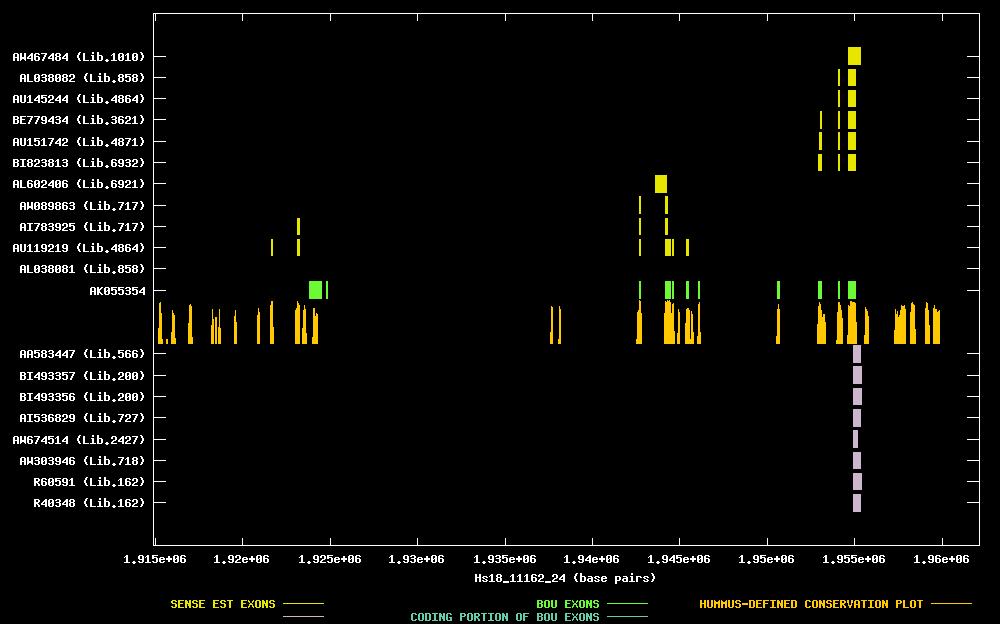







| Candidate UniGene cluster: | UniGene Cluster Hs.351458 |
| Description: | Homo sapiens cDNA FLJ30792 fis, clone FEBRA2001004, highly similar to Human (clone N5-4) protein p84 mRNA |
| Best-Of-UniGene (BOU) Sequence | AK055354 |
| Genomic Coordiantes Displayed: | Bases 1914880 to 1962141 of contig Hs18_11162_24 |
| BOU Orientation Along Contig: | LEFT-TO-RIGHT with respect to contig |
| Link to JPEG of genomic mapping | Hs.351458.jpeg |
| Best sense EST/protein match: | AK055354 matched ref|XP_008756.4| (XM_008756) nuclear matrix protein p84 [Homo sapiens] (E = e-161) |
| Best antisense EST/protein match: | No protein match with an e-value of less than 1e-10 |

ANTISENSE ESTs
| AA583447 | cDNA clone IMAGE:1086144 | germ cell | 3' read | 1.2 kb |  | |
| BI493357 | cDNA clone IMAGE:2540501 | ear | 5' read |  | ||
| BI493356 | cDNA clone IMAGE:2540501 | ear | 3' read |  | ||
| AI536829 | cDNA clone IMAGE:2178942 | uterus | 3' read | 1.3 kb |  | |
| AW674514 | cDNA clone IMAGE:2984940 | placenta | 3' read |  | ||
| AW303946 | cDNA clone IMAGE:2801317 | colon | 3' read |  | ||
| R60591 | cDNA clone IMAGE:37964 | brain | 3' read |  | ||
| R40348 | cDNA clone IMAGE:28909 | brain | 3' read | 1.6 kb |  |
| AL038081 | cDNA clone DKFZp566K171 | kidney | 5' read | |||
| AU119219 | cDNA clone HEMBA1005302 | whole embryo, mainly head | 5' read |  | ||
| AI783925 | cDNA clone IMAGE:2219839 | ovary | 3' read |  | ||
| AW089863 | cDNA clone IMAGE:2594501 | ovary | 3' read |  | ||
| AL602406 | cDNA clone DKFZp686G0713 | human skeletal muscle | 5' read |